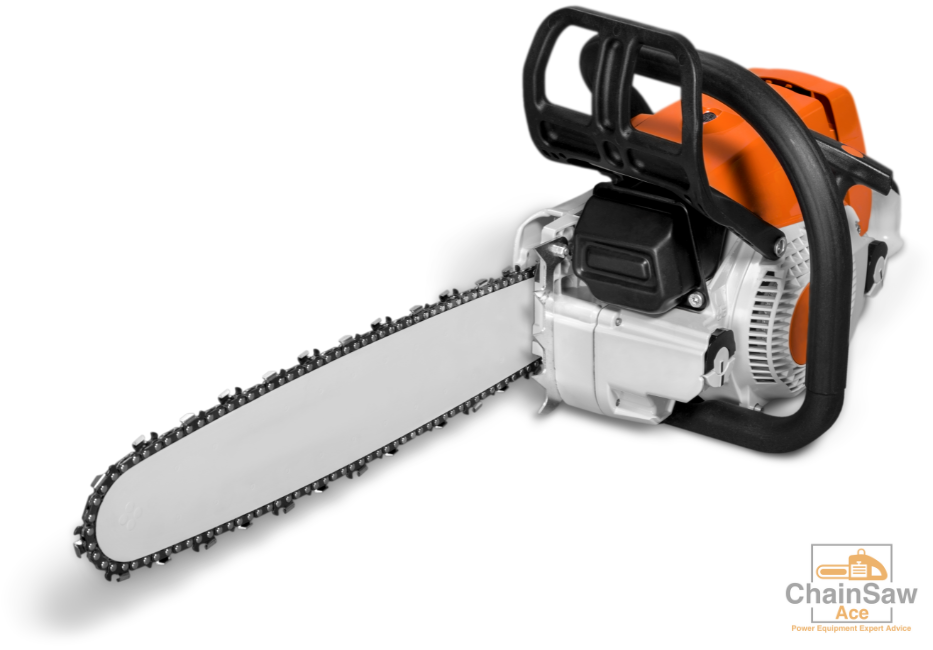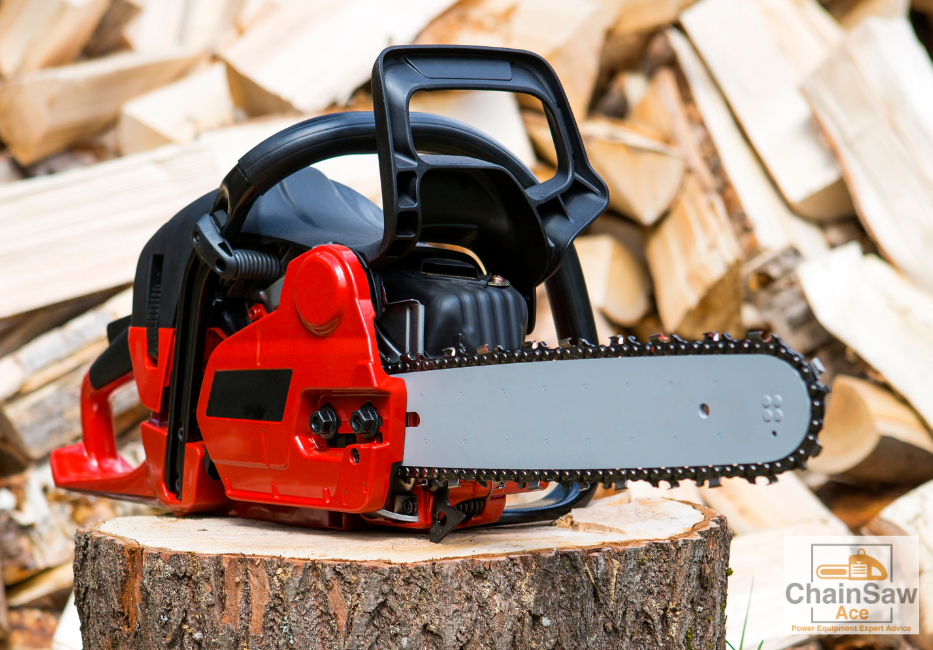
A well-maintained chainsaw is crucial for optimal performance, safety, and an extended lifespan. This comprehensive guide will teach you everything you need to know about how to clean a chainsaw, including expert tips for maintaining various types of chainsaws, such as electric, battery, and gas-powered models.
So, let’s dive in and ensure your chainsaw remains in peak working condition!
1. Preparing Your Workspace and Gathering Essential Tools
Before starting the cleaning process, it’s important to have a well-organized workspace and the necessary tools at hand. Here’s what you need:
- Choose a stable workbench situated in a well-ventilated area to prevent the buildup of harmful fumes.
- Assemble the following cleaning tools:
- Compressed air or an air compressor for efficient dirt removal (Here on Amazon)
- A cleaning tool, such as a putty knife, thin screwdriver, or even an old toothbrush, for those hard-to-reach areas (Here on Amazon)
- Household ammonia to tackle particularly stubborn dirt (Here on Amazon)
- Paper shop towels or a damp cloth for wiping away residue and grime (Here on Amazon)
- Protective gloves to wear when cleaning your chainsaw to ensure your safety (Here on Amazon)

2. Disassembling and Thoroughly Cleaning the Chainsaw Components
Air Filter
A clean air filter is essential for maintaining your chainsaw’s performance. To clean it:
- Carefully remove the top cover to access the air filter.
- Regularly clean the filter by directing compressed air through the cool air intake opening, effectively dislodging dirt and debris.
- For particularly stubborn dirt, soak the air filter in a mixture of household ammonia and water before rinsing it thoroughly.
Chain Brake, Sprocket Cover, and Guide Bar Studs
Cleaning these components helps ensure smooth operation and prevents excessive wear on your chainsaw.
- Release the chain brake and remove the side cover to expose the sprocket cover and bar studs.
- Detach the chainsaw chain from the guide bar.
- Use air or a cleaning tool to remove dirt and grime from the sprocket cover, bar studs, and chain brake.

Spark Plug and Cooling Fins
A clean spark plug and cooling fins are essential for proper engine performance and for preventing overheating.
- Disconnect the spark plug connector and carefully remove the spark plug.
- Utilize compressed air to clean the spark plugs and cooling fins, removing any built-up debris.
Chainsaw Chain, Guide Bar, and Bar Groove
Cleaning these components helps maintain cutting efficiency and reduces wear on your chainsaw.
- Employ a cleaning tool to remove oil residue and dirt from the chainsaw chain’s cutting teeth.
- Wipe down the guide bar and bar groove with a damp cloth or paper towel, removing any lingering oil residue.
- If necessary, use a thin screwdriver or a similar cleaning tool to clean the bar groove more thoroughly.

Fuel Tank and Oil Tank (for Gas-Powered Chainsaws)
Proper maintenance of these tanks prevents contamination and ensures smooth operation.
- Empty the fuel tank by running the chainsaw until no more fuel remains inside.
- Remove any remaining fuel using paper towels or a syringe to get it all.
- Clean the oil inlet hole and oil outlet port with a thin screwdriver or a cleaning tool, ensuring the free flow of oil.
Battery Slot (for a Battery Chainsaw)
Cleaning the battery slot is important for maintaining proper electrical connections and battery efficiency.
- Remove the battery from the battery slot.
- Wipe down the battery slot using a cloth or paper towel, ensuring that all oil residue and dirt are removed.
3. Maintaining the Lubrication Oil Conveyor System
Proper lubrication is essential for the smooth operation and longevity of your chainsaw.
- Inspect the oil level in the oil tank and top up with bar and chain oil if needed.
- Check the lubrication system (bar oiling system) for any blockages and clean it with pressurized air or a cleaning tool to ensure optimal oil flow.
4. Reassembling and Testing Your Chainsaw
After cleaning all the components, it’s time to put your chainsaw back together and test its functionality.
- Reattach the chainsaw chain, guide bar, and side cover, making sure everything is aligned correctly.
- Replace the spark plug and reconnect the spark plug connector to restore power to the engine.
- Reinstall the air filter and top cover, ensuring a snug fit.
- Start your chainsaw and check for proper functioning, including smooth operation and the absence of unusual noises or vibrations.

5. Storing Your Chainsaw Properly
Proper storage is essential for preserving the life and performance of your chainsaw.
- If you won’t be using your chainsaw for more than a month, drain the fuel tank (for gas-powered chainsaws) or remove the battery (for battery-type chainsaws) to prevent potential damage.
- Store your chainsaw in a cool, dry place away from direct sunlight to protect it from the elements.
6. Additional Tips for Keeping Your Chainsaw in Top Shape
To ensure your chainsaw remains in peak condition, follow these expert tips:
- Always use the appropriate fuel mix (for gas chainsaws) or charge the battery according to the manufacturer’s recommendations (for battery chainsaws).
- Regularly inspect the cutting chain for sharpness and tension, and adjust or replace it as needed.
- Keep an eye on the condition of the clutch drum and rope rotor area, cleaning and replacing parts as necessary.
- Monitor the oil level in the oil tank and the condition of the air filters, replacing them when they become dirty or clogged.
- Frequently check the chainsaw switches and electrical connections for any signs of wear or damage, addressing any issues promptly.
By adhering to these guidelines, you can ensure that your chainsaw remains clean and in excellent working condition for years to come. Regular maintenance not only helps you avoid potential accidents but also saves you money in the long run by preventing costly repairs or replacements.
Wrapping Up
Learning how to clean a chainsaw is an essential skill for any chainsaw owner. By following the steps outlined in this guide, you can keep your chainsaw in top working condition and extend its life, ensuring that it continues to serve you well for all your cutting needs. The tips in this guide will apply to a electric chainsaw, battery chainsaw, and gas-powered chainsaw.
So, roll up your sleeves, gather your cleaning supplies, and give your trusty chainsaw the care it deserves. You will be an expert chainsaw cleaner in no time!
Have a great day out there, and happy cutting.

